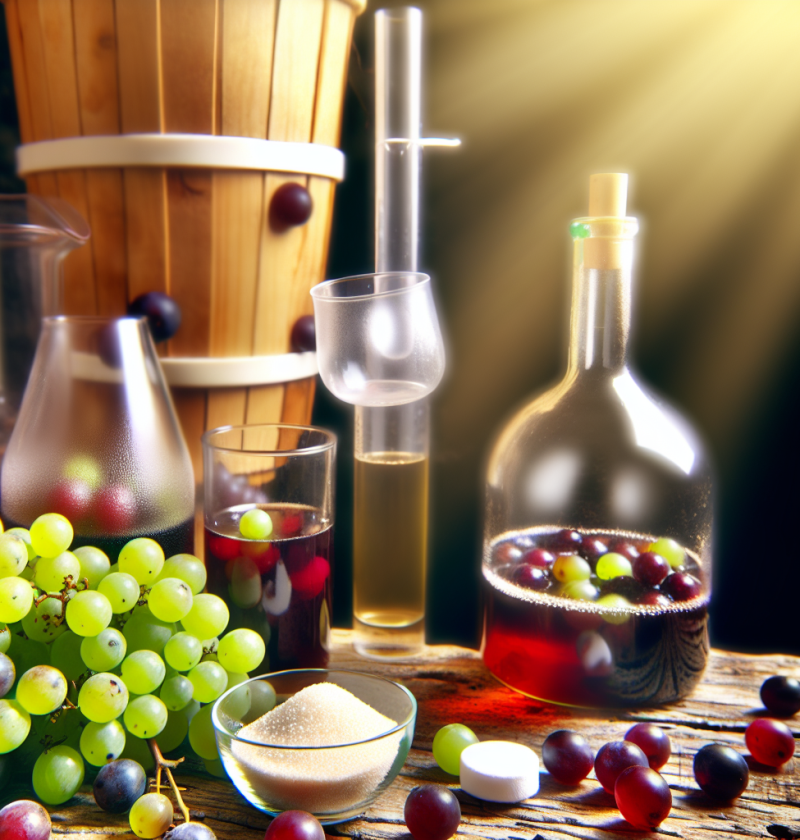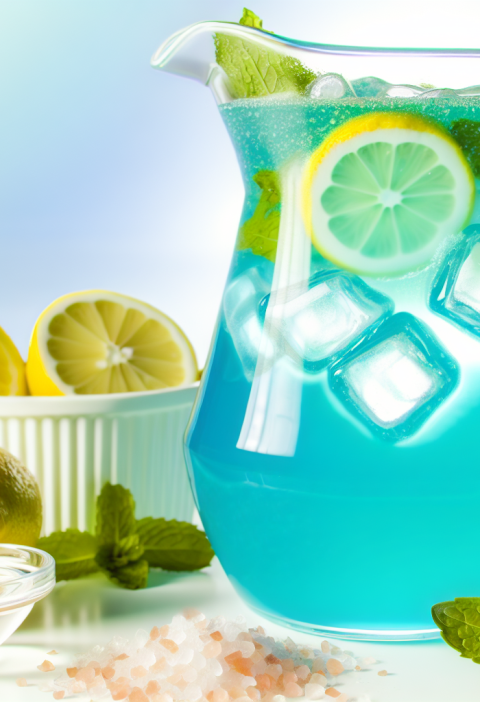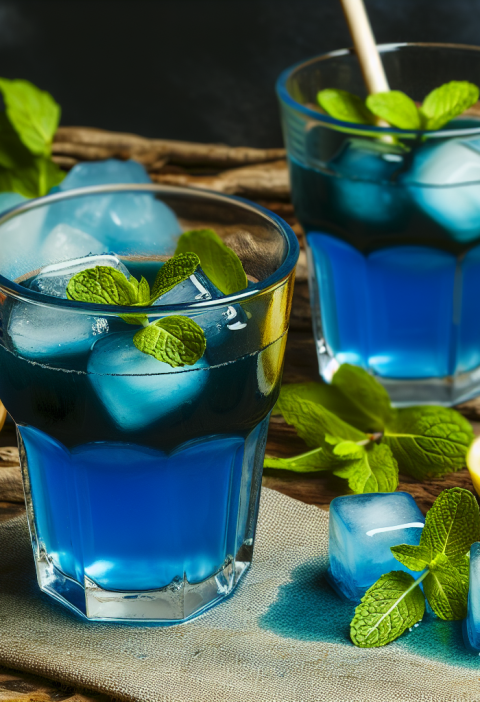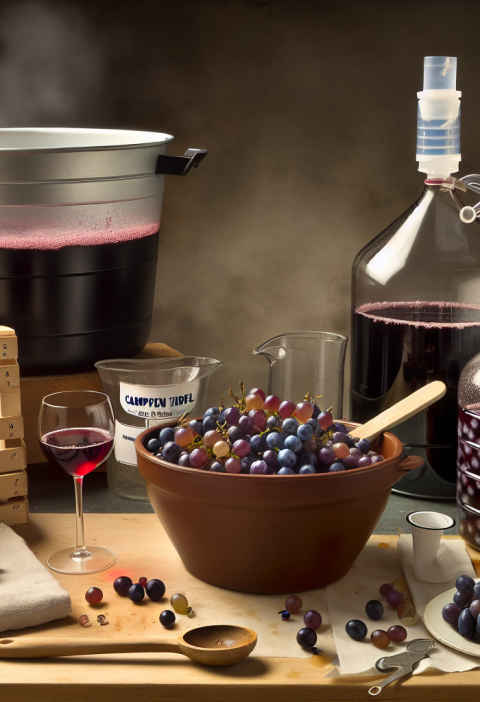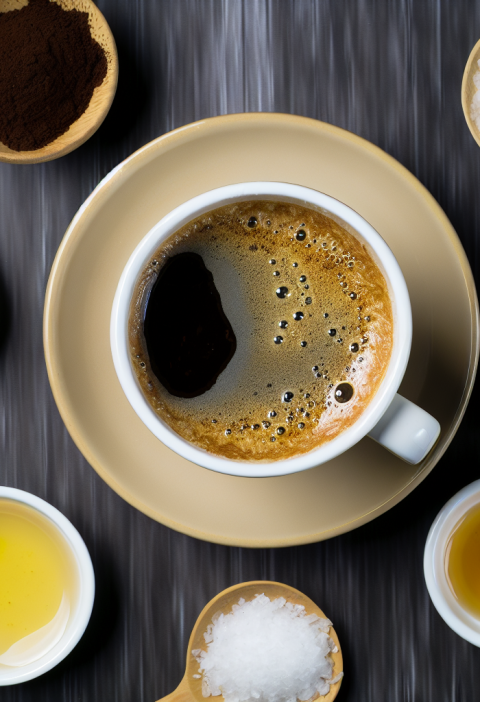“`html
Unlock the Secret to Homemade Muscadine Wine: A Flavorful Journey Awaits!
Have you ever savored a sip of rich, full-bodied muscadine wine and wondered how it’s crafted? The captivating aroma evoking vivid images of sun-drenched vineyards and joyous family gatherings has a story to tell. I’ve journeyed through the steps, and from my experience, nothing quite beats the satisfaction of creating your own wine at home. The process is like an aromatic embrace, revitalizing your spirit and turning your kitchen into a winery sanctuary. Grab your muscadines because this delightful adventure is 100% worth the time and effort!
Preparation Time
- Preparation time: 30 minutes
- Fermentation time: 2-4 weeks
- Bottling: 1-2 hours
This recipe yields approximately 1 gallon of muscadine wine, perfect for gatherings of 4-6 people. The overall difficulty is moderate, but with patience and love, you’ll delight in the aroma of your creation!
The Necessary Ingredients
- 4-5 pounds of fresh muscadines (red or white varieties)
- 2 cups of granulated sugar (adjust for sweetness)
- 1 campden tablet (to sterilize must)
- 1 packet of wine yeast (such as Montrachet or Lalvin 71B)
- Water (about 1 gallon)
- A clean, sanitized 1-gallon glass carboy or fermentation vessel
- Aloe vera juice or honey (optional for added flavor)
For a vegan version, simply ensure to use plant-based alternatives for sweetening. It’s incredible how versatile this recipe can be!
The Steps of Preparation
Wine-making is an art, and these steps will guide you through the process from vineyard to bottle. Pay attention to the details, savoring the journey with each step you take.
- Wash the muscadines thoroughly under running water to remove dirt and impurities.
- In a large mixing bowl, crush the muscadines gently to release their juice while being careful not to crush the seeds.
- Add the crushed muscadines to your sanitized fermentation vessel.
- Dissolve the sugar in approximately half a gallon of hot water, stirring until it’s fully dissolved.
- Pour the sugar mixture over the muscadines in the fermentation vessel.
- Add enough cool water to reach the 1-gallon mark on the carboy.
- Crush the campden tablet and mix it into the must (this step ensures sterilization, keeping unwanted bacteria at bay).
- Wait 24 hours before adding the yeast to allow the campden to dissipate.
- Sprinkle the wine yeast over the must and gently stir.
- Cover the fermentation vessel with a clean cloth and secure it with a rubber band (to prevent contaminants while allowing gasses to escape).
- After a few days, you should notice bubbling—this is a good sign of fermentation!
- Once fermentation slows after about 2 weeks, siphon the liquid into a clean, sterilized secondary fermentation vessel, leaving sediment behind.
- Let the wine age in a cool, dark place for another 2-4 weeks, tasting periodically to gauge flavor development.
- When ready, siphon into clean bottles and seal them with corks.
Nutritional Benefits
- Muscadine grapes are rich in antioxidants, particularly polyphenols, which contribute to enhanced heart health.
- The natural sugars from muscadines provide a quick energy boost without the crash associated with processed sugars.
- Moderate wine consumption has been linked to improved mental health and increased longevity, making it a delightful treat for relaxation.
- Rich in dietary fiber, muscadines can aid digestion and contribute to a healthy gut.
As you embark on this winemaking journey, feel free to experiment and add unique touches. Think about infusing citrus zest, seasonal spices, or even your favorite aromatic herbs for an adventurous twist!
Possible Additions or Upgrades
- Add fresh mint for a refreshing twist.
- Infuse with local honey for a floral sweetness.
- Mix with fruit juices (like peach or pear) before fermentation for layers of flavor.
This journey has been a remarkable one for me—each season brings a new batch and new memories, crafting not only wine but cherished moments with loved ones. I can’t wait to hear about your experiences when you create this delightful muscadine wine!
Frequently Asked Questions
**How long does the entire wine-making process take?**
The full process typically takes about 4-6 weeks, including fermentation and aging.
**Can I use frozen muscadines instead of fresh?**
Yes, frozen muscadines work well too; just allow them to thaw and proceed with the recipe.
**What if I don’t have a fermentation vessel?**
A large glass jar with a tight seal can work, but ensure it’s sanitized to avoid contamination.
**Can I sweeten my wine during fermentation?**
It’s best to avoid additional sugars during primary fermentation, but you can adjust sweetness after bottling.
**How should I store my finished wine?**
Store in a cool, dark place, upright to minimize cork deterioration.
**How long will my homemade muscadine wine last?**
When stored properly, it can last 1-3 years, but it’s best consumed within the first year for optimal flavor.
**What if my wine doesn’t ferment?**
Check the temperature and yeast viability; sometimes, adding a small amount of sugar can help restart fermentation.
**Can I use this method for other types of grapes?**
Absolutely! While the flavor will vary, this method can be applied to most wine-making grapes.
**Is it necessary to use a campden tablet?**
While it helps with sterilization, you can skip it if you’re certain about the cleanliness of your ingredients and equipment.
**How much does it cost to make muscadine wine?**
Costs can vary, but generally expect to spend around $30-$50 for the ingredients and equipment, which can yield several bottles of delicious wine!
If you found this recipe inspiring, I encourage you to share it with friends and family! Spread the joy of wine-making on social media and let others join in on creating their muscadine masterpieces!
“`

